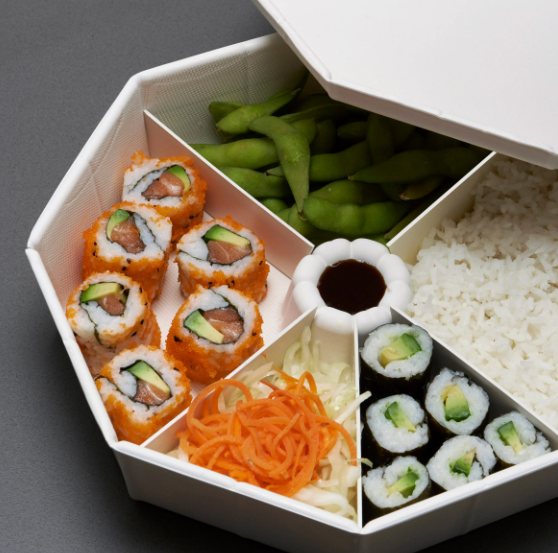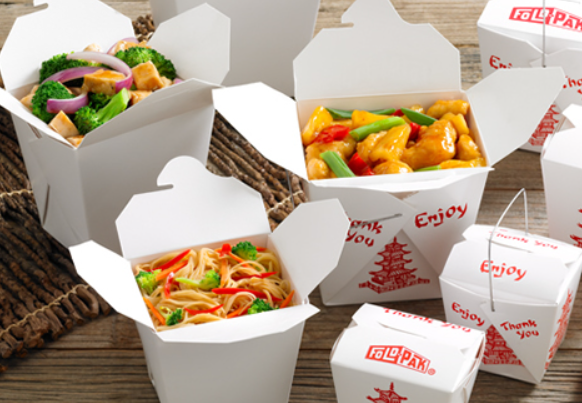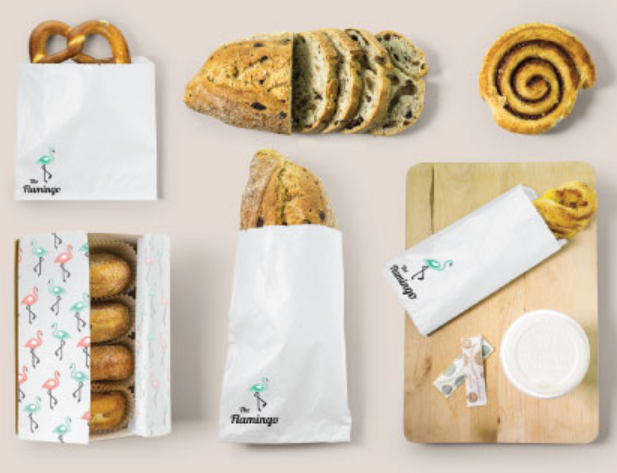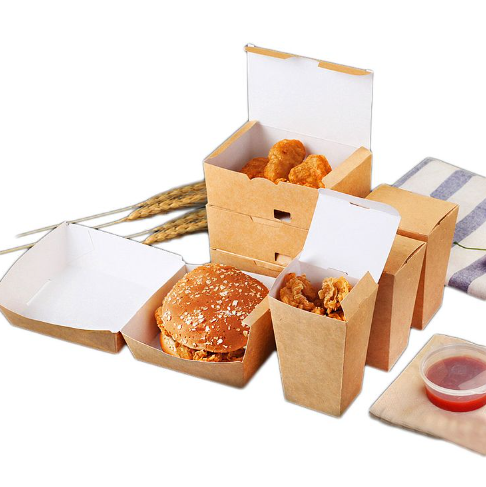Introduction:
The importance of food packaging can't be overstated. One major project in the process is to protect our foods from contamination,
especially when they're perishable items like fresh produce or meats which have a very short shelf life before spoilage sets into effect if not consumed soon after purchase.
Due to both their stored nature as well as environmental factors such as high temperatures found near roadways during summer months where cars likewise emit gas fumes conducive towards spoilage through bacterial growths on surfaces exposed long enough even without direct exposure.

We all know that food packaging is at the heart of modern agriculture, but it’s not just for show.
Packaging prevents waste and ensures quality maintenance throughout its shelf life - which means you're eating what might be compromising chemicals less often!
And with thousands upon thousands of them coming into contact every day with our foods, some have been shown harmful while others don't even bother knowing how'll affect us yet...
The food production industry has been focusing on eco-friendly and recycling technology lately.
There are many different types of green packaging available now, including ones that use recycled material or have reduced waste output in general!
The food packaging industry has been on a steady growth trajectory for years now, but what exactly are the key points you need to know? Keep reading if that sounds like something interesting or relevant.

The current food packaging situation:
The different types of food packaging have unique names to identify them.
For example, a plastic bottle is made from polyvinyl chloride (PVC) and has this material touching the beverages inside it while glass products need an additional layer involved: metal covers that protect against oxygen molecules in our atmosphere causing corrosion on its surface(azotemia).
Aluminum cans are the most common type of beverage container, and they come with an added protective layer to keep them from corrosion when storing drinks containing acids or other chemical ingredients.

The direct food contact surface in this case isn’t cardboard but rather laminated plastic- which makes it perfect for carrying out foods like beer kegs.
You can also get paper that is coated with a waterproof or grease-resistant coating to make sure your notes stay clean.
Are there requirements for food packaging in the UK?
You should ensure that the packaging you use for your business is safe, as this will allow consumers to enjoy their products without worry.
Do you know what's better than a delicious meal? A beautiful packaging design!
The FIC regulation is all about protecting our food from contamination:
- Use materials that do not become a source of packaging and packaging contamination.
- Store packaging materials in such a way that they do not become contaminated.
- Wrapping and packaging food in a manner that avoids product contamination.
You may also know a lot about the materials and types of food packaging.
Let's see how you can choose environmentally friendly, healthy options for your next purchase!
Categories of package materials used in food
The most used materials in the food industry are detailed: plastics, glass, metals, and wood and their derivatives.

Papers, cardboard, and wood:
In recent years, package manufacturers are paying close attention to issues related to health and the environment by working with recycled products that increase their raw material life.
As a result, some companies have started using kraft paper for food packaging purposes instead of traditional plastic or other materials like psi containers which can take up significantly less space on our planet's limited land resources while still providing consumers with quality goods they expect when buying something at store shelves!
Cardboard is a material made up of several superimposed layers.
It's thicker, harder, and more resistant than paper! The main use for this cardboard-like substance is packages that come in boxes like cereal or granola bars at convenience stores.
Products derived from wood are extremely useful in the packaging of food. Paper, which is a very cheap and lightweight product with an excellent printing capacity can easily be corrected by combining it together with other materials such as plastic or paraffin so that its sensitivity to moisture does not affect quality output.
Plastics
With their ability to be transformed into any desired shape, plastics are the perfect material for food storage. The lightness and versatility make it easy enough that you can find a way of storing whatever your heart desires.
The use of plastics in place of traditional packaging materials can be cheaper, easier on your budget, and reduce energy consumption during production.
In addition, they are able to preserve food for longer minimizing the need for preservatives!
The durability and low cost of plastics make them a popular material for labeling products.
Unfortunately, these materials cannot be recycled due to their plasticity which makes it difficult if not impossible in some cases with current technology.
The variety of plastics is vast, with some being more commonly used than others.
PVC (Polyvinyl chloride) has been around for ages and it still remains one popular type because it's very durable;
however, there are other options like polystyrene(PS) which can be formed into any shape required by technology today due to their high malleability property as well as low-cost price point when manufactured in large quantities.

Metals (steel, tin, aluminum)
Metals are the perfect materials for preserving our food supply, and they come in all different shapes.
One common type of metal used to store perishable items is aluminum foil which helps protect Against spoilage due its ability to prevent oxygen absorption - just one more reason why it's so valuable!
If you're looking for the best way to pack your food, look no further than aluminum! Not only is it lightweight and recyclable but also cheap. This means that if something does happen in an accident or on vacation then all of these factors will be taken into consideration before deciding what happens with any leftover tin cans from last night's dinner party.
Aluminum foil is a highly flexible product that allows for the preservation or protection of the food in your home. However, it's difficult to use nowadays because modern fast-food packaging equipment doesn't work well with aluminum sheets due to their wrinkles and rips which make them look old-fashioned!
When considering which type of cans to use for your product, it is important that you take into account the qualities. For example, if they are carbonated then a thin-walled aluminum container will be more suitable as these types can resist pressure better than wide-walled steel ones do.
Glass
Glass is a great material to use in food preparation because it can prevent chemical reactions that would spoil your product.
For instance, its impermeability makes safety for gases and vapors when handling foods with glass! However, this beautiful substance also has some downsides like fragility/weight which requires more energy than other materials do.
Glass is a recyclable product because it can be used as a container repeatedly. Glass uses one of the most abundant raw materials on Earth, silica but unlike other products made from rocks such glass has been proven not to exist anywhere else!
Glass is a great material to use for storing your frozen food because it's durable and can withstand high temperatures.
However, there are some precautions that need to be taken into account when choosing this type of container- make sure not only they have lids but also narrow mouth shapes so you don't accidentally knock out any ice cubes during transport!

Types of food packaging:
JARS
Jars are an excellent way to store your food.
They’re rigid containers that have a round neck and diameter similar to the body of the product, with a large opening capable of supporting a lid for keeping things fresh inside!
TRAYS AND PUNNETS
Whether you're buying food to take on your next camping trip or storing leftovers from last night's dinner, it is important that the container be strong enough. You want something durable and easy to use! There are many different types of storage containers available such as transparent plastic trays which can store anything without sacrificing taste thanks in part due to their see-through design.
BAG IN BOX
The use of these containers is widespread and well known. They're most often found packaging wine, but they can also be used for storing liquids like water or oil in places where safety matters! These waterproof bags have an outer cardboard box that protects against dirt & moisture while inside there's a flexible plastic bottle with either one tap attached so you don't spill any when pouring your product out onto store shelves.
DOY-PACK
You can take a look at these awesome flexible containers that are designed so you could hold them in an upright position both filled and empty. They usually incorporate two side longitudinal welds as well as another one near the top of where the product would go, which is closed with caps to keep everything fresh.
FILM
When plastic is heated, it auto latches to create a continuous and thin layer. If this material has more than 250 microns of thickness, we consider it as if there were two sheets stuck together rather than just one piece of film or foil with no structural integrity.
FLOW-PACK
The film that forms this packaging is a perfect seal, making the bag sealed and containing the product.
Design-inspired packaging for the life
The most attractive product on the shelves is often its packaging. This makes for unique designs that will catch your eye and make you want to buy! We've collected some great food package designs below, which one can inspire you?
With the increasing awareness of environmental protection, three major points in recyclable and degradable materials are going to become a trend for food packaging.
What does this mean?
This means that we can expect more eco-friendly options when it comes down right off your plate!

Three Sustainability Trends Reshaping the Food Package Industry
Corporate leaders are embracing sustainable food and beverage packaging
A key food packaging trend in 2020 has been toward recycled and recyclable materials, partly in response to stunning media reports of waste plastic, notably the Great Pacific Garbage Patch (three times the size of France).
Leading beverage and restaurant brands are taking major steps to sustainability:
The average person is not willing to sacrifice their lifestyle for the environment, but these corporations have shown that it can be done.
Coca-Cola's plan will see them collect and recycle one bottle or can per each one they sell by 2030 while McDonald’s announced a commitment in order have 100% of its guest packaging made from renewable resources like wood pulp paper every year through 2025-2030.

Governments are not only banning plastic but mandating reusable and recycling materials
The UK is ahead of the game when it comes to food packaging; they have an ambitious goal for 2025 that will make their country, state & territory environment ministers very happy.
The global trend toward recycling and sustainable materials can already be seen on this legislative front--less plastic or single-use items like paper bags means more opportunities coming from waste streams such as forgotten takeaway boxes at home!
Creative and sustainable food packaging is creating new solutions
Innovative new packaging materials that are both sustainable and recyclable, like kraft paper or PP woven bags currently used in the market.
Advantages of food packaging
You might be surprised to learn that used food packaging can actually have some benefits. It's not just about the fact that it protects your foods, or even makes them last longer.
These advantages include:
– improved protection for the food and an increased shelf-life,
– better quality products reaching the consumer,
– more attractive products to compete with other manufacturers,
– easily identifiable products for consumers to select from retail shops,
– sometimes re-usable containers,
– tamperproof packages reduce the risk of adulteration,
– making foods more easily handled and stored by retailers and consumers.
Conclusion:
The shift towards sustainable materials is a direct response to consumer demand for products that are environmentally friendly.
With recent legislation on carbon emissions, many companies have been shifting their business model in order to accommodate this new reality and create more eco-friendly options with less waste output.
The food, beverage, and restaurant industries that are looking for environmentally-friendly post-consumer recycled products can reduce their environmental impact as well as contribute to developing a sustainable economy.
Why choose ecopackers?
Ecopackers is a company that specializes in the design, manufacture, and supply of packaging products.
They have won the trust placed with their ability to produce excellent Packaging Solutions combined with creative designs from various product lines as well as professional teams who provide satisfying services!
Our team in China and UK are working together to help you meet your needs with various applications in the packaging industry.
